Science fiction embodies any fictionally inspired written work that carries a theme referencing futuristic, scientifically technological, fantastic, or otherwise alien or otherworldly content.
Examples include but are not limited to encounters with alien life forms, space exploration, telepathy, and robotic characters.
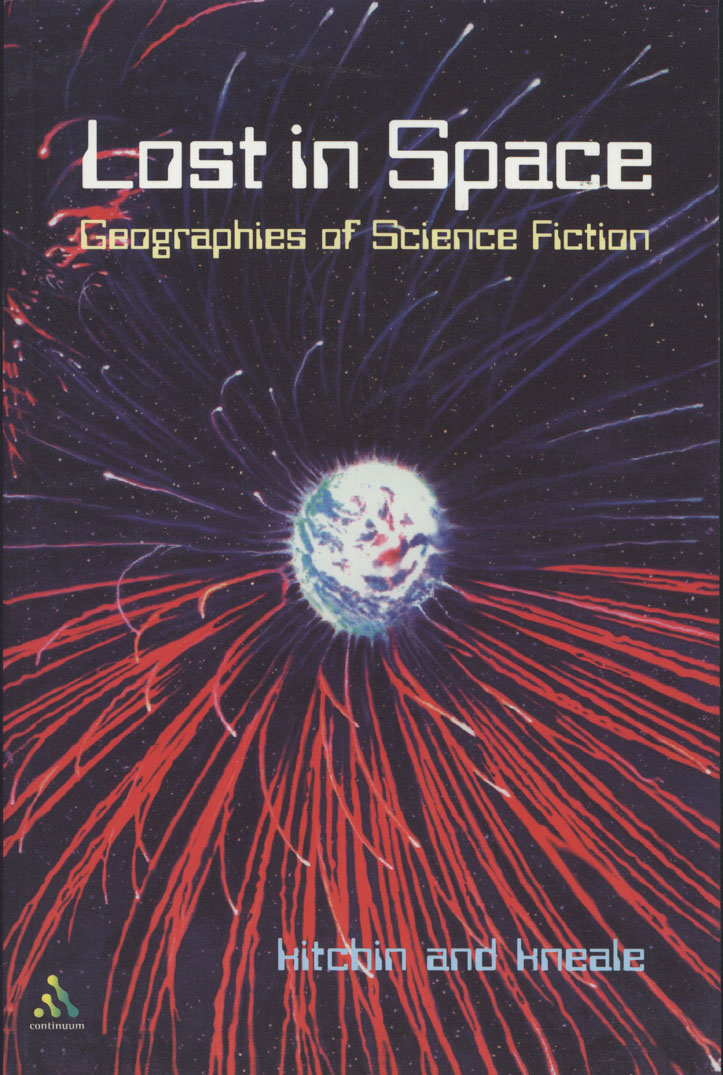 Published by Continuum in 2002
Published by Continuum in 2002
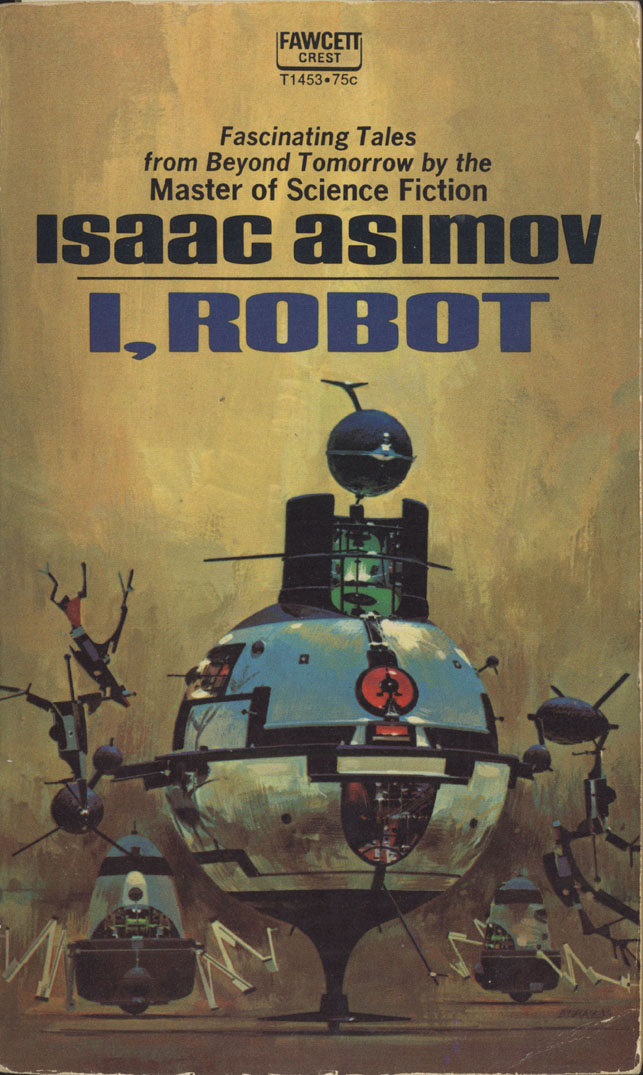 Published by Fawcett Crest, 1970
Published by Fawcett Crest, 1970
 Cambridge University Press, 2003
Cambridge University Press, 2003
The earliest known “pure” science fiction writing has been traced to Jules Verne’s novels of fantastic exploration and encounters with unknown realms and their inhabitants such as:
 Penguin Books, 1965
Penguin Books, 1965
- Journey to the Center of the Earth (1864)
- 20,000 Leagues under the Sea (1870)
- From the Earth to the Moon (1873)
- Off On a Comet (1877)
Jules Verne’s novels were enormously successful and were particularly responsible for creating generations of science fiction readers and an ensuing sci-fi fan movement that would endure for years.
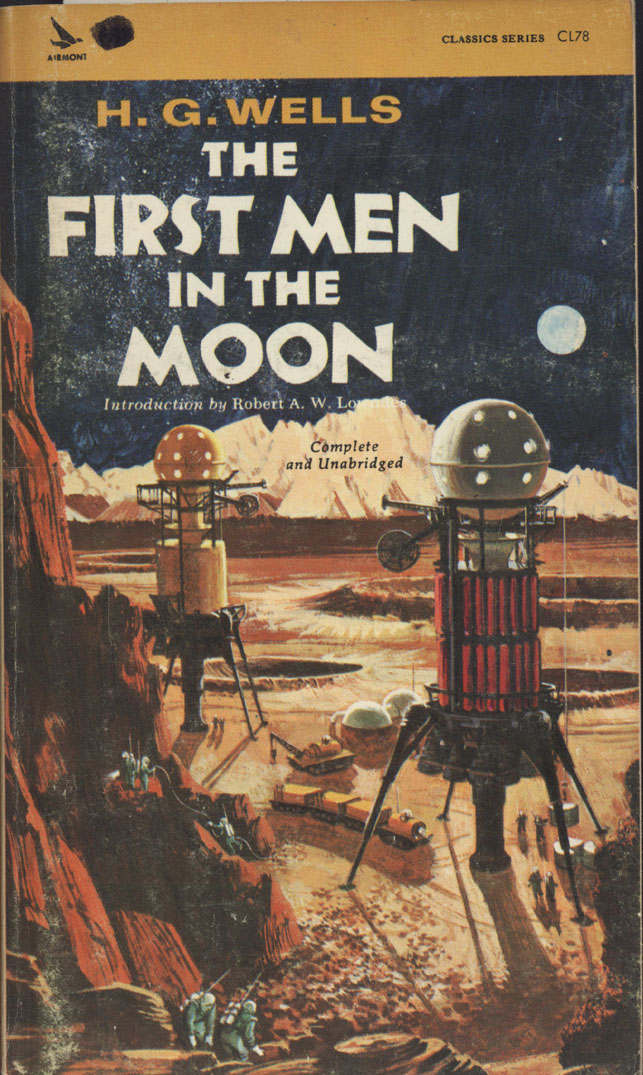 Airmont Publishing, 1965
Airmont Publishing, 1965
H. G. Wells was another renowned master of science fiction in the earlier eras of the culture and, like Verne, spawned a thriving interest in all things sci-fi with his own novels:
- The Island of Dr. Moreau (1896)
- The Invisible Man (1897)
- The War of the Worlds (1898)
- The First Man in the Moon (1901)
Inevitably, the enduring popularity of these novels and others of their kin would result in a persistent demand among newly-minted sci-fi fans for a greater supply and access to science fiction writing.
This would come in the form of science fiction pulp magazines: hastily executed, graphically illustrated collections of short science fiction tales produced by fans for fans. The pulps provided a monthly dose of science fiction written by popular writers of the genre that were not accessible in novel form.
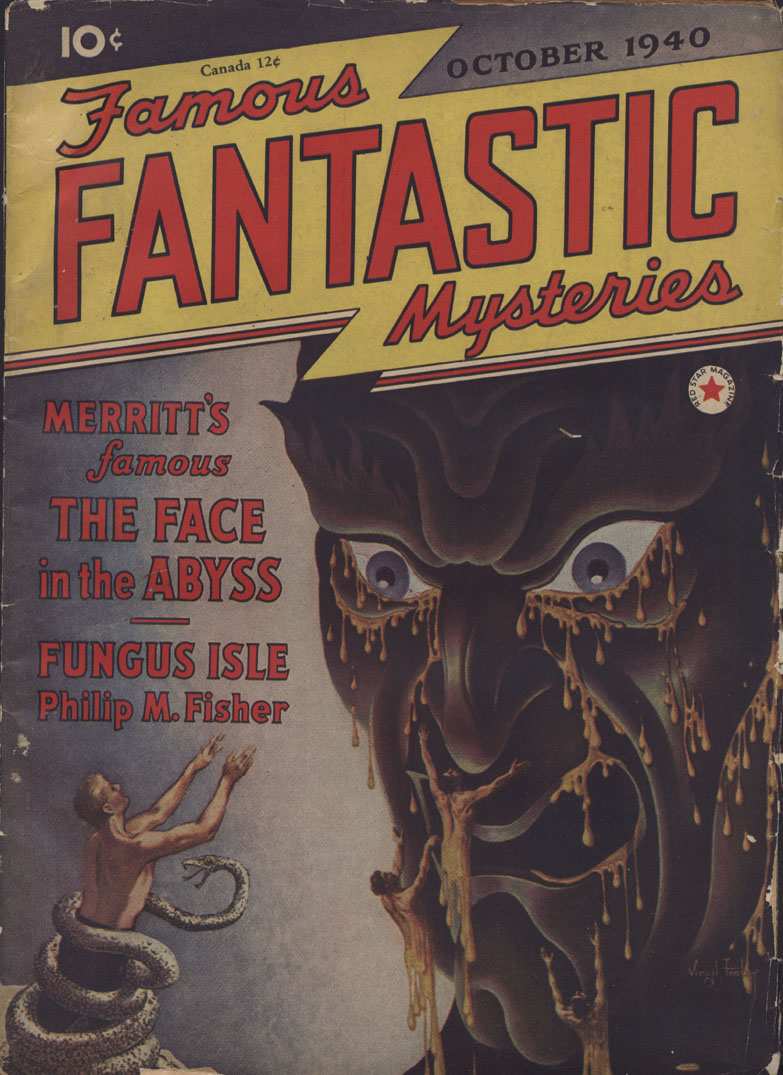 October 1940 issue
October 1940 issue
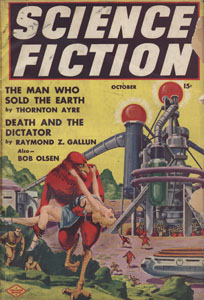 Issue from October 1940
Issue from October 1940
 December 1939 issue
December 1939 issue
Perhaps the earliest pulp to have existed was Hugo Gernsback’s “Amazing Stories” (April 1926). It compiled the work of Verne, Wells, and Edgar Allen Poe to name a few significant contributors. The July 1926 copy of Amazing Stories features Jules Verne’s "A Trip to the Center of the Earth."
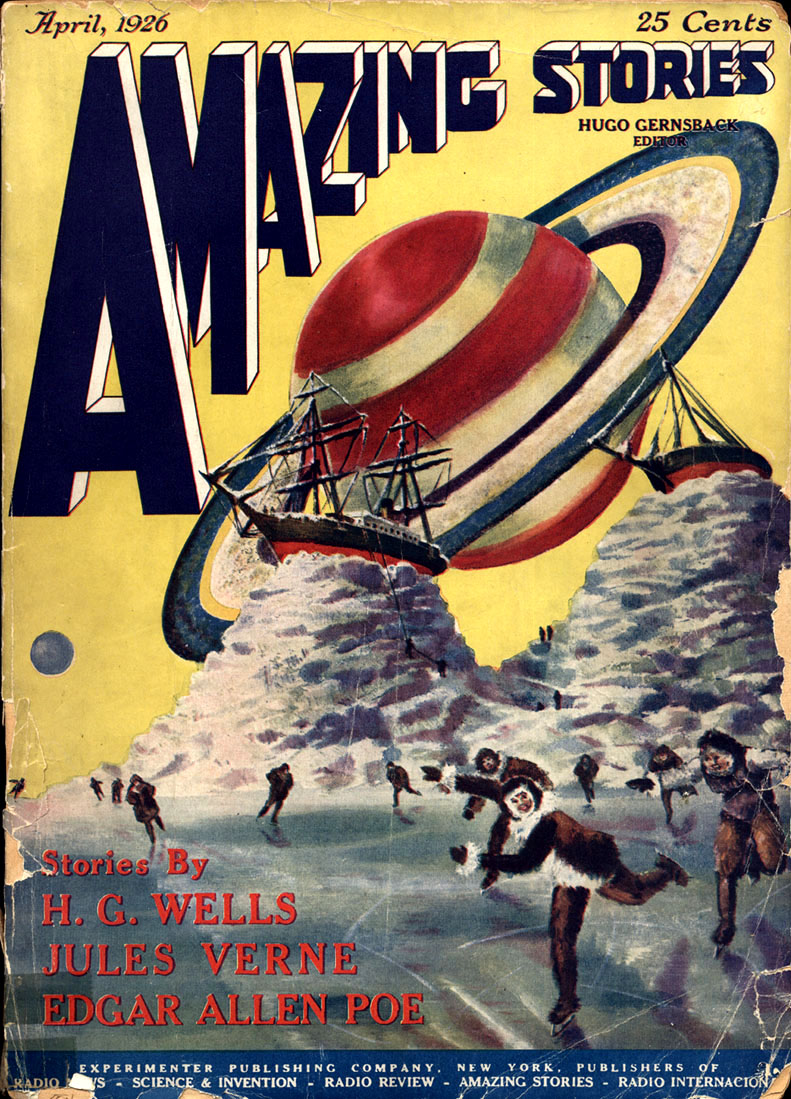 April 1926 copy of Amazing Stories
April 1926 copy of Amazing Stories
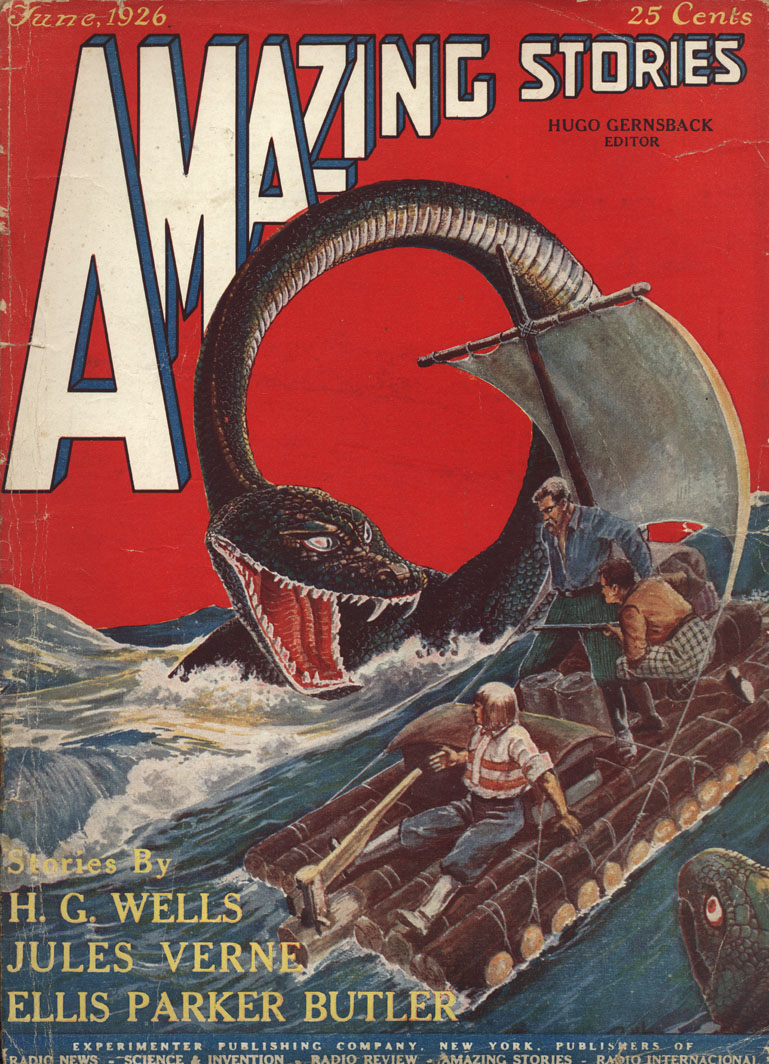 June 1926 copy of Amazing Stories
June 1926 copy of Amazing Stories
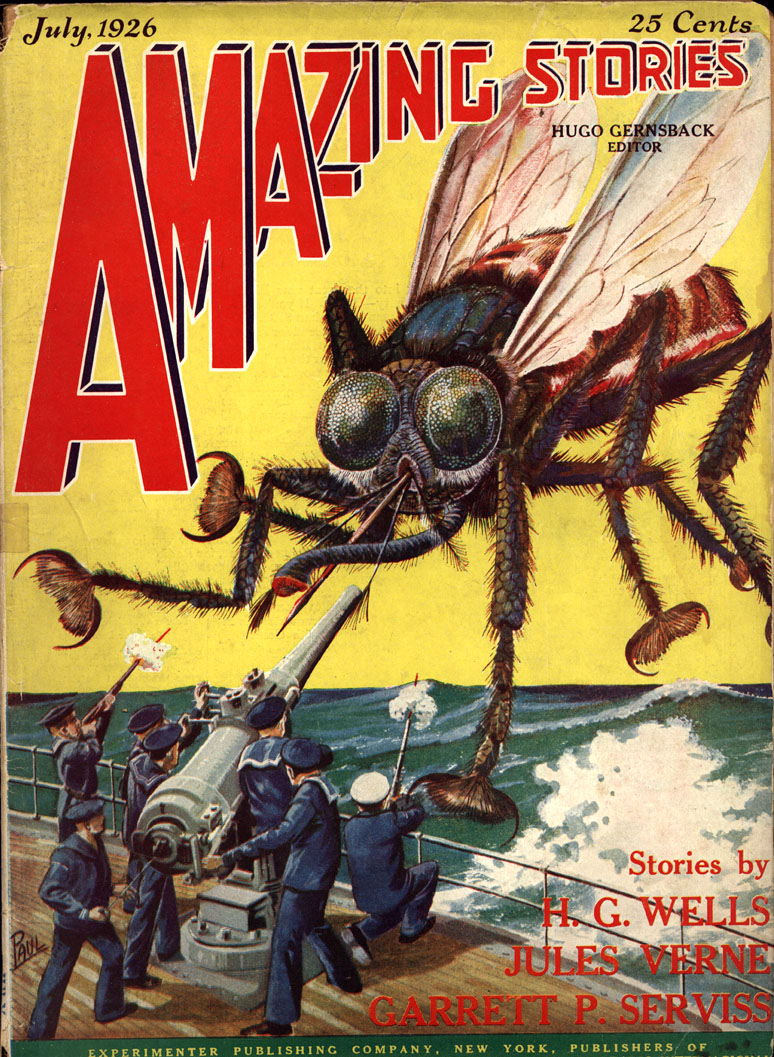 July 1926 copy of Amazing Stories
July 1926 copy of Amazing Stories
From the early 1940s onward, sci-fi maintained a grip on its readership and increased in popularity, spawning formal fan organizations, social clubs, and science fiction fan conventions. These conventions and gatherings encouraged and welcomed both amateur and professional pulp writers each as well as publishing industry professionals.
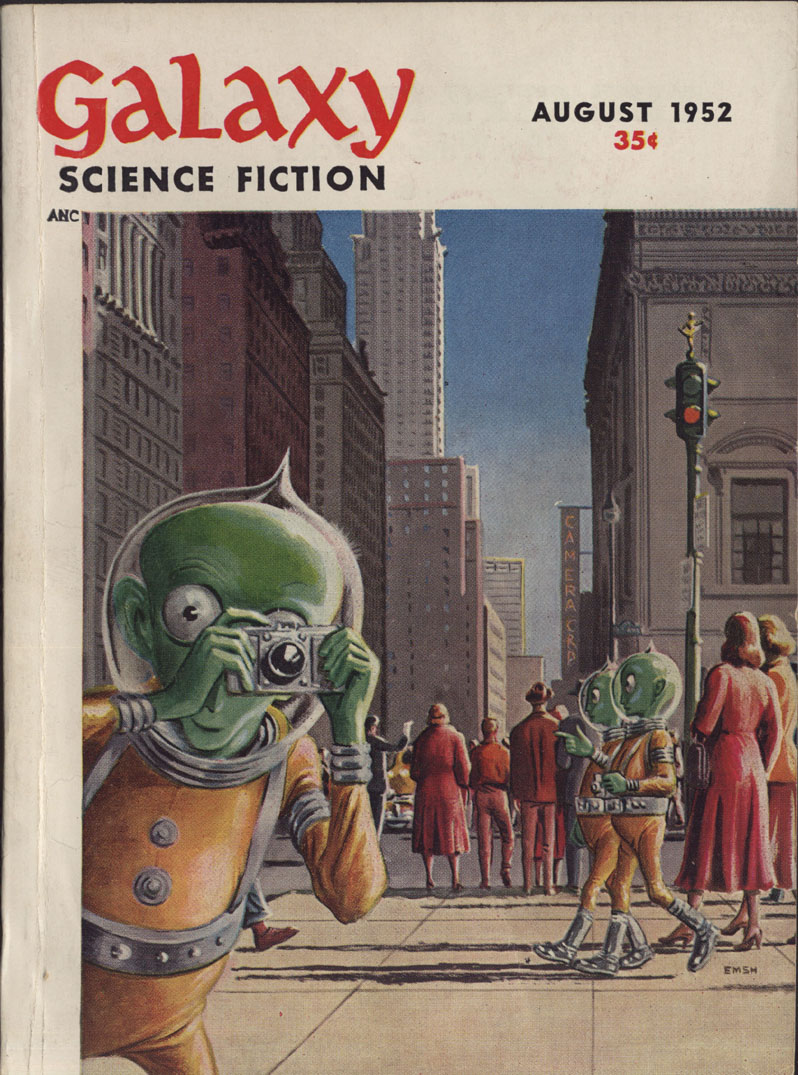 August 1952 issue of Galaxy Science Fiction
August 1952 issue of Galaxy Science Fiction
Popular concentrations included themes such as technical mastery and the progress of mankind as experienced through moon flights. Through the 1950s, Cold War paranoia and discomfort were reflected in stories of alien invasion and the doom of mankind as well as alien duplication and imitation of human beings. Ray Bradbury’s “Martians” was an exemplary pulp contribution that embodied this theme. The 1950’s blockbuster film, “Invasion of the Body Snatchers” produced scores of copycats in the sci-fi pulp culture.
Enduring through the 1950s, American civil unrest and Soviet distrust inspired pulp stories brimming with alien invasions. Meanwhile, the race for moon technology and technological advancement was reflected in tales of strange universes and unexplored alien lands. Robotic characters represented man’s burning desire for scientific and technological dominance.
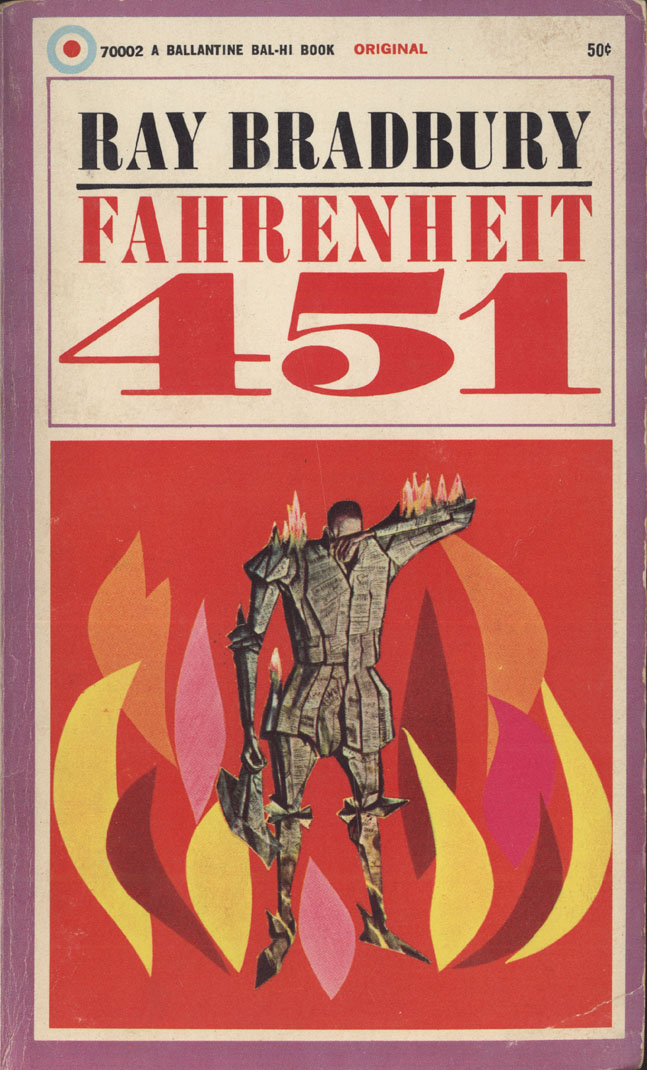 Ballantine Books, 1968
Ballantine Books, 1968
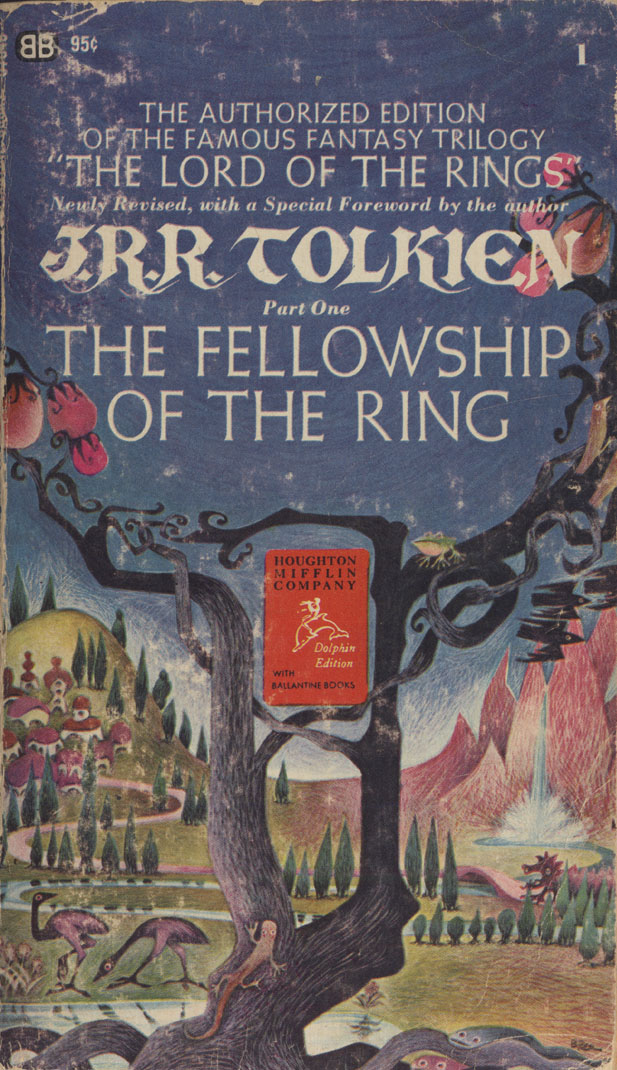 Ballantine Books, 1966
Ballantine Books, 1966
Noteworthy science fiction writings of the '50s that incorporated these central themes included
Fahrenheit 451 (1953) by Ray Bradbury and the
Lord of the Rings trilogy (1954-55) by J.R.R Tolkein, which was conveniently continued in an overwhelmingly popular pulp series.
 Chilton Book Company, 1965
Chilton Book Company, 1965
Cold War interest and sci-fi blockbuster hits of the 1950s pulled science fiction and its culture firmly into the mainstream in the 1960s. Besides gaining a respected position on best-seller lists, it also fostered a new media sensation. Frank Herbert’s
Dune enjoyed cult status outside the underground realm of sci-fi fandom. Here again, the dominating themes of unique worlds and inhabitants and defying the odds propelled science fiction to pop culture glory.
By the 1970s, female science fiction writers like Ursula Le Guin, Marion Zimmer Bradley, and Anne McCaffrey were entering the fray of sci-fi pulp and novel writing and inspiring new legions of fans.
Equally inspiring were the film mega-hits “Star Wars” and “Close Encounters of the Third Kind.” “Star Wars” and its enduring themes of good vs. evil and man’s triumph over strange galaxies and life forms would survive as the iconic symbol of science fiction’s rise to respectability in mainstream culture.
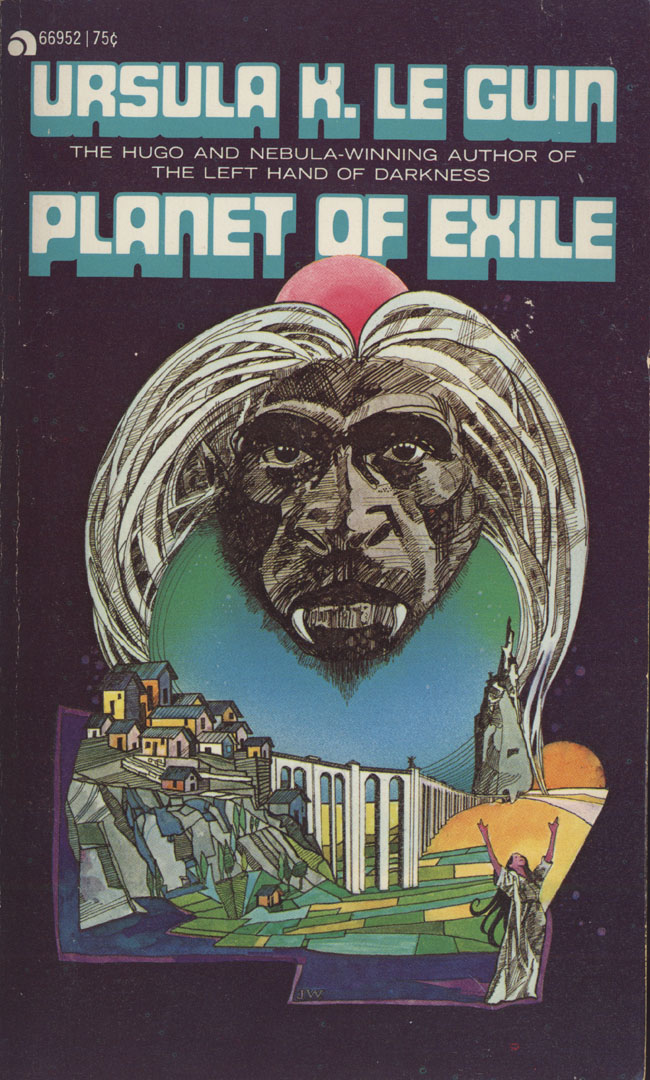 Ace Books, 1973
Ace Books, 1973
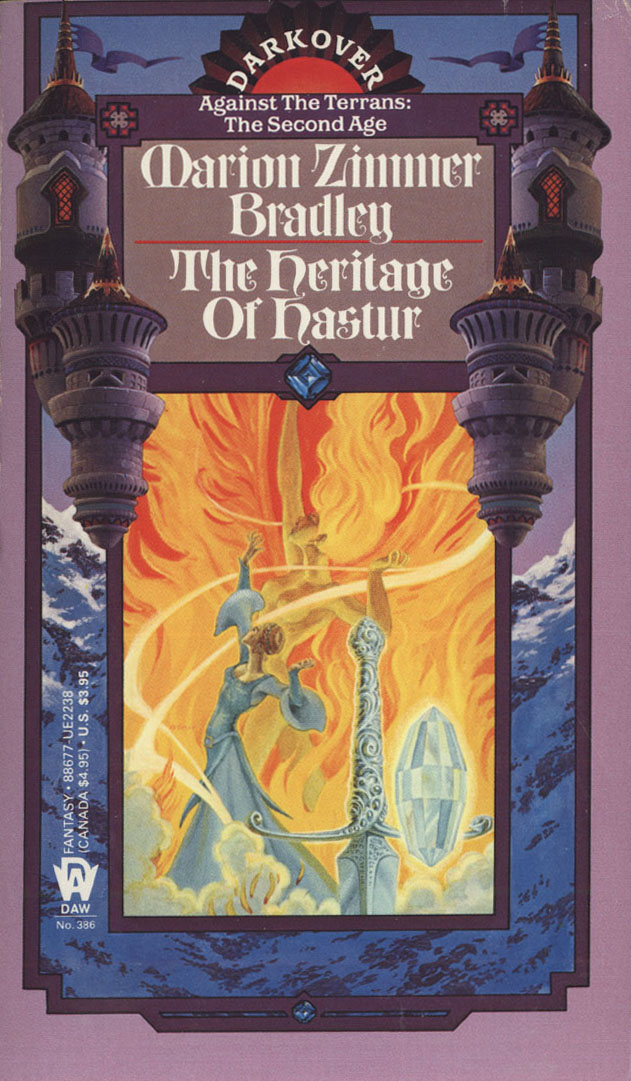 Daw Books, 1975
Daw Books, 1975
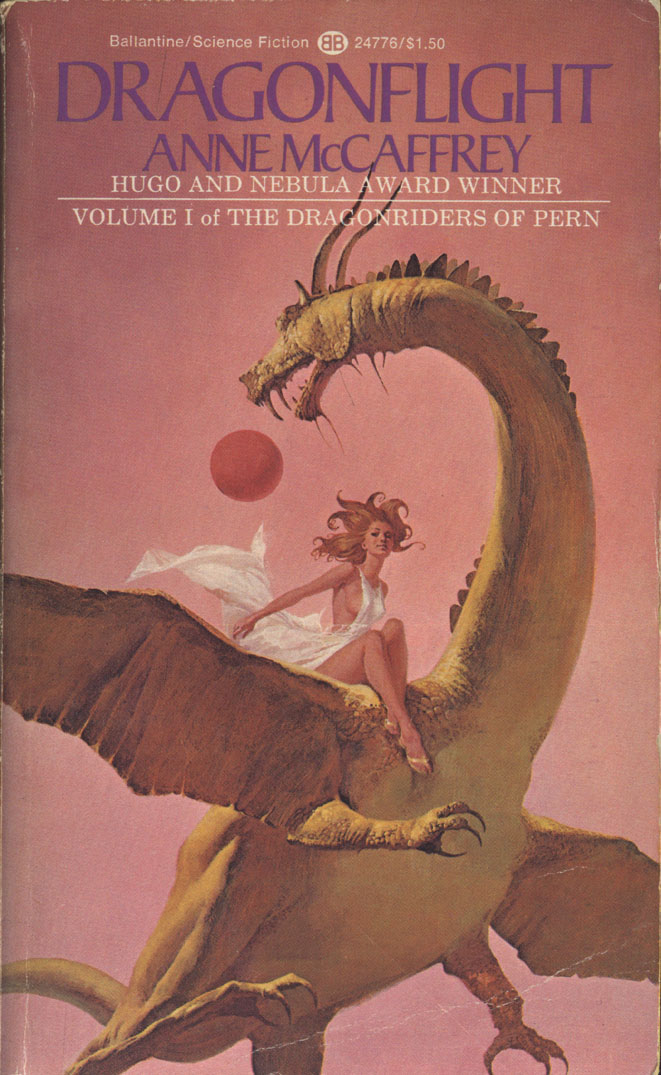 Ballantine Books, 1975
Ballantine Books, 1975
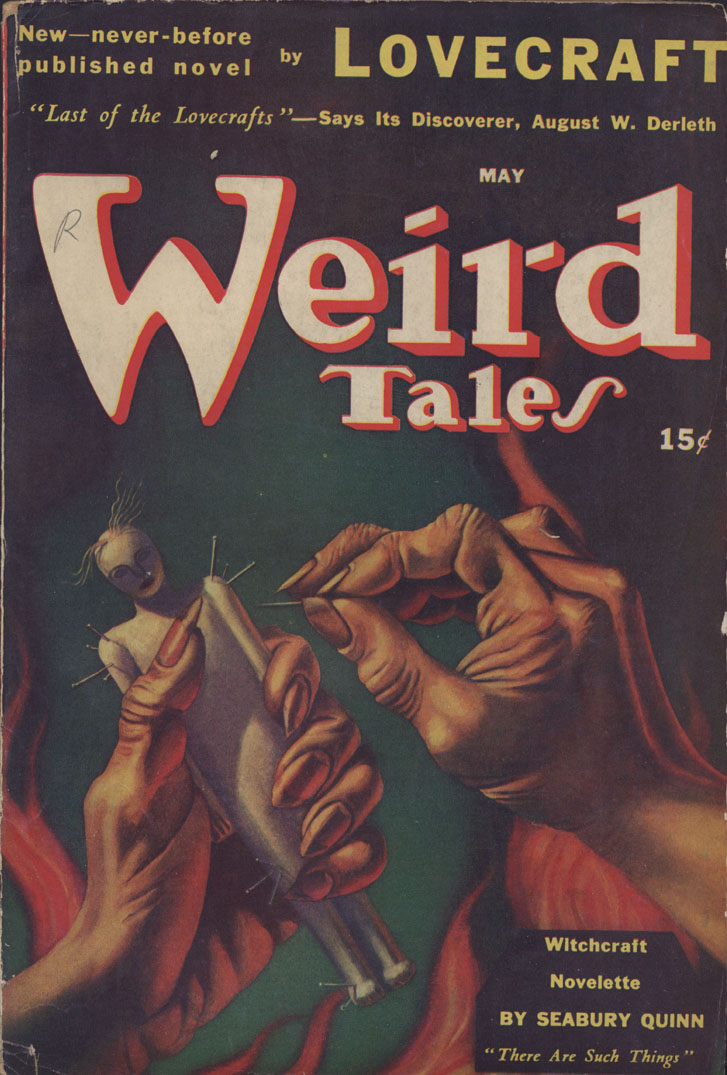 May 1941 issue
May 1941 issue
Ironically enough, it was the phenomenally successful rise of science fiction that would result in an ensuing abatement in the pulp writing and publishing industries.
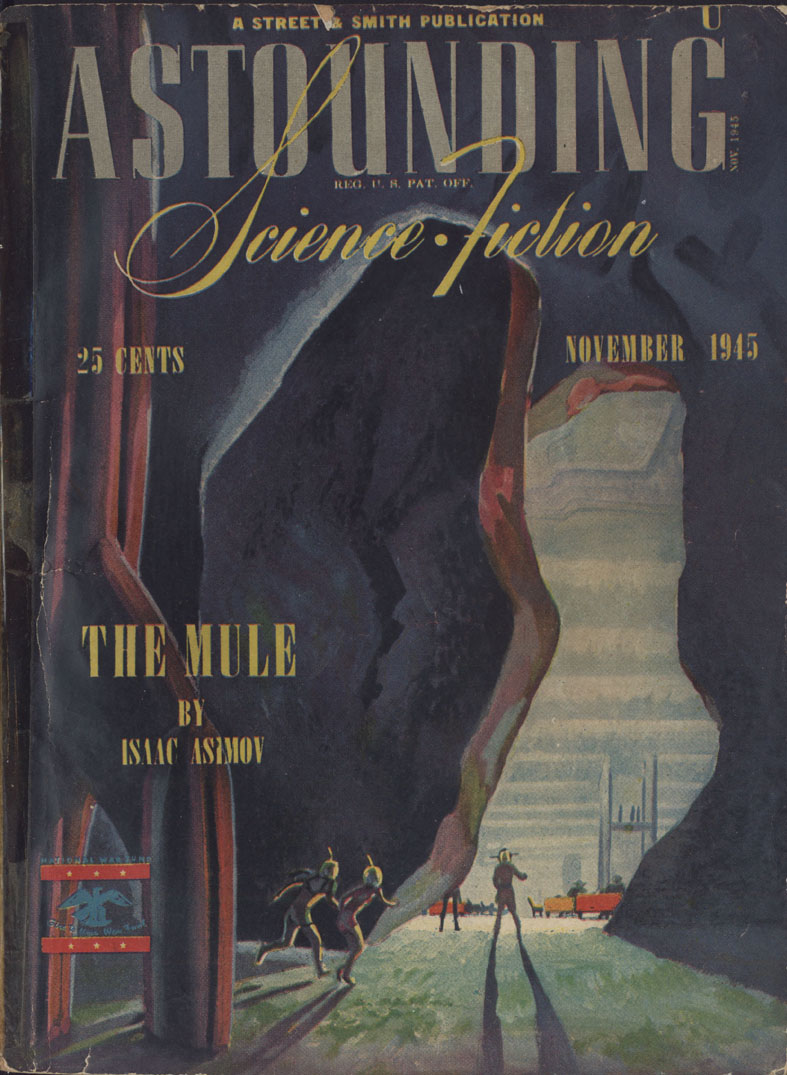 November 1945 issue
November 1945 issue
Science fiction had become decidedly commercialized and the predictable media hunger for “Star Wars” and its brethen on the film screen and on the bookshelves proved to be irresistible for throngs of science fiction writers who clamored for a position on the best-seller list.
It was only a matter of time before the science fiction pulp magazine returned to its sacred
origins in the culture of sci-fi fandom.
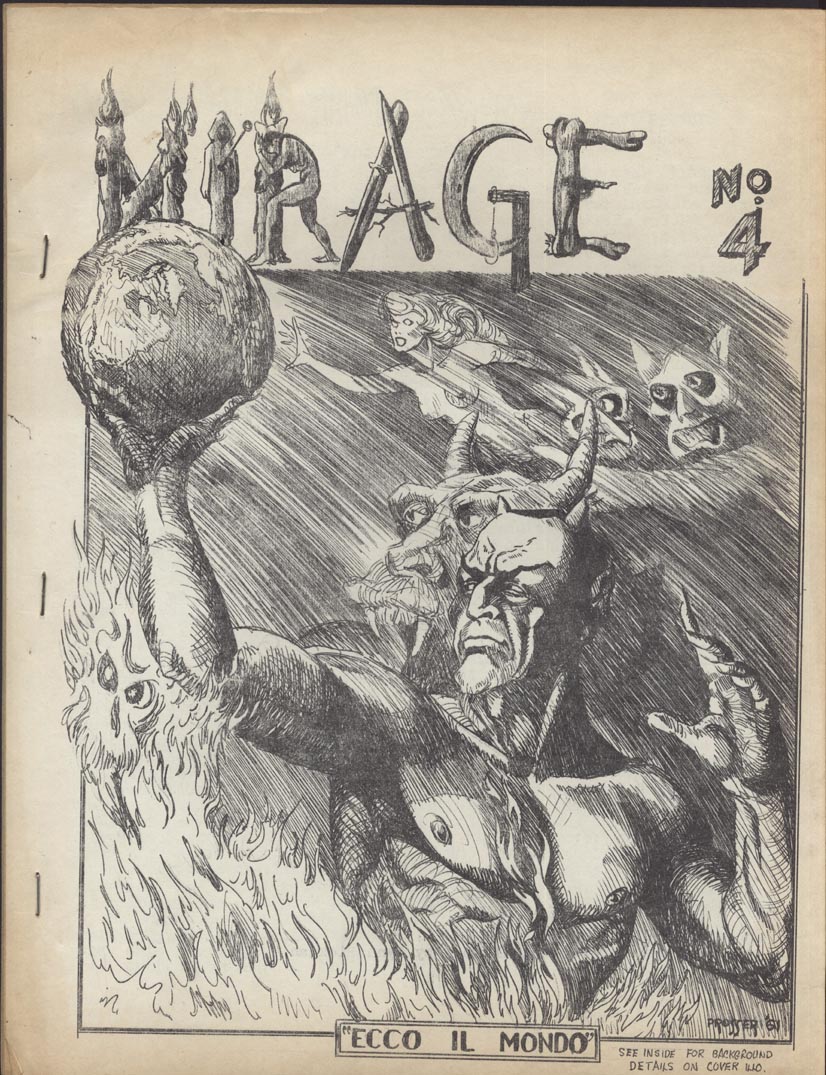 Mirage fanzine, 1961
Mirage fanzine, 1961
Fanzines are defined as amateur or hobby magazines which are often produced, edited, and published by fans of a specific genre for entertainment and/or use by other fans. Besides science fiction topics, other examples include (but are not limited to) horror, mystery suspense, and crime series.
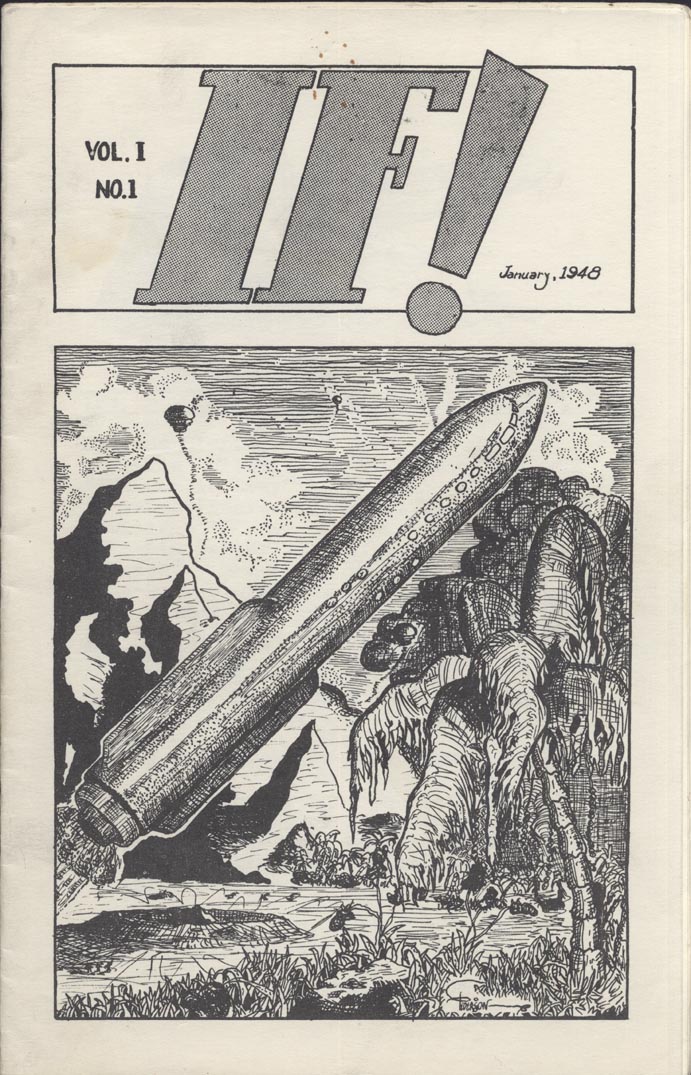 January 1948 issue
January 1948 issue
From the '30s onward, the overwhelming popularity of science fiction pulp magazines produced not only a mass cult of science fiction interest and readership but also fans of the genre who aspired to join the ranks of the professional contributors.
The culmination of this zealousness, curiosity, and inspiration resulted in the amateur science fiction fanzine. These were roughly modeled after the pulps but differed from them in production, distribution, and format.
Science fiction fanzines were entirely written, produced, and distributed by the fans with no direct involvement with professional publishing services or marketing. Because of this, the fanzines were often raw in quality- in terms of writing and in the final product itself. Drawings to accompany the stories were most often crudely executed and sometimes graphic. The ‘zines themselves were thin and appeared cheaply produced.
 January 1938 issue
January 1938 issue
However, the science fiction fanzines did contain a crucial point of interest for readers: fanzine creators included mailing lists and addresses for fans to contact and communicate with other fans and professionals of the genre.
Often, the fanzines served like a platform for organizing fan meetings and conventions and attracting new members to specific fan groups. This distinct ability to provide a means of fan interaction and a jump-start for aspiring science fiction writers laid the path for a thriving underground industry.
Rather than marketing their products, fanzine creators relied almost entirely on word of mouth by other fans and on visibility at fan gatherings such as science fiction conventions, readings etc.
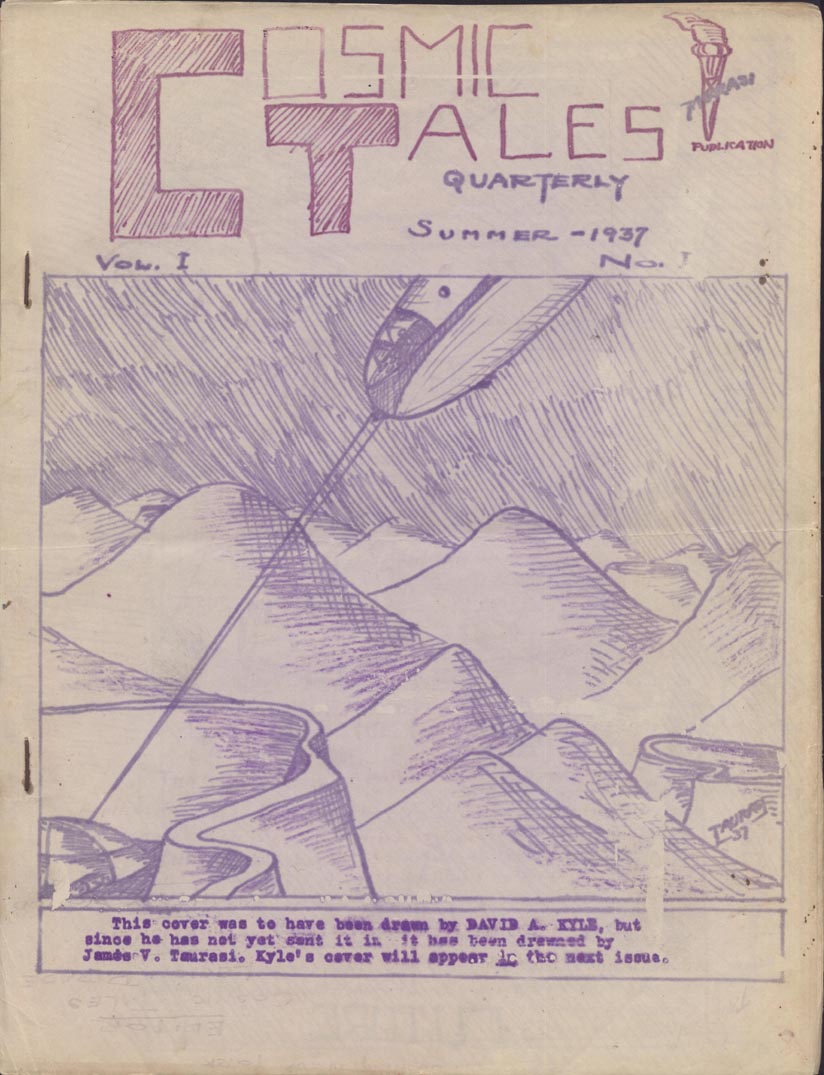 Summer 1937 issue
Summer 1937 issue
It was not uncommon to discover a row of fanzines alongside a shelf of pulps at any given fan convention and, in some cases, this visibility promoted the amateur creations to the professional industry whose members were known to peruse conventions and fan social events.
In some cases, particularly admirable editions even attracted professional writer contribution in the form of “guest authors.” A select minority even established themselves as prominent editions in the industry such as Sam Moskowitz’s “Fantasy News."
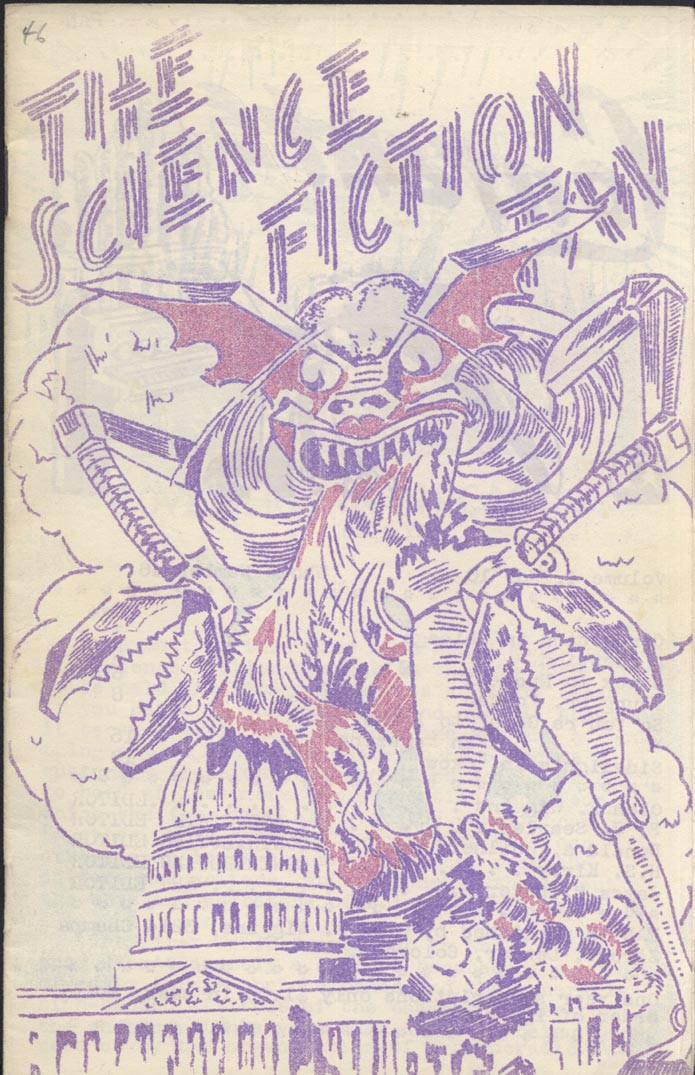 May 1940 issue
May 1940 issue
The majority of science fiction fanzines were short-lived due to the creator’s time and money constraints in producing and distributing his/her work. The typical fanzine author also held a fulltime occupation in addition to managing the fanzine’s operations. Further burdening the author was the fanzine’s certain status as a strictly money-losing venture.
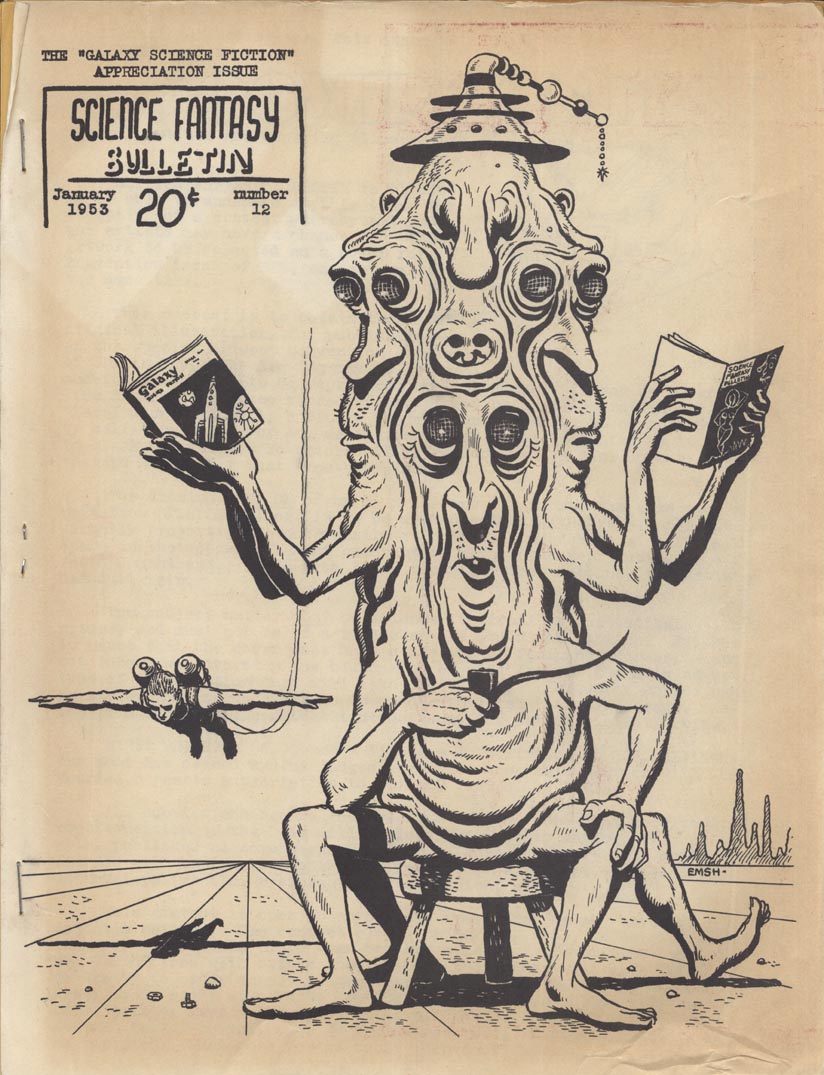 January 1953 issue
January 1953 issue
Though the fanzine’s self-efficient production and marketing strategy were comparatively affordable and bottleneck proof, more often than not, the fanzine was fortunate to break even…. let alone earn a profit as a sustainable franchise for its creator. As a result, it was not surprising for some science fiction fanzines to stop production and circulation in a matter of a week--if not days.
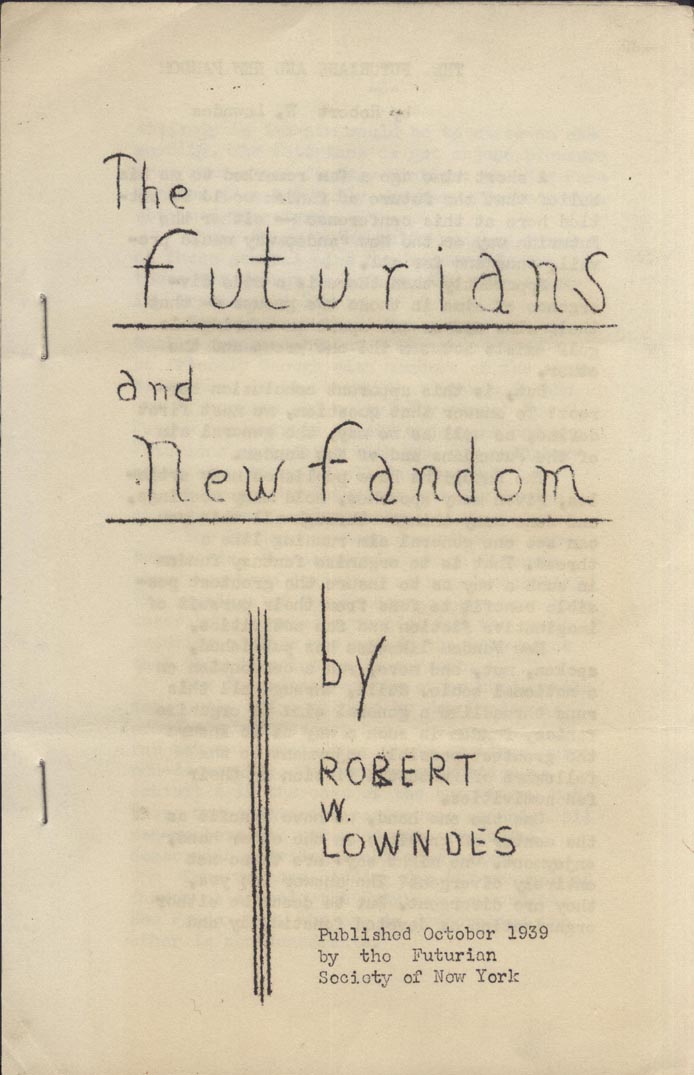 October 1939 issue
October 1939 issue
Despite the discouraging facts, the fanzine eras did produce some of science fiction’s most profound writers, who, after entertaining fanzines of their own, ascended to professional status.
A short list of these anointed ranks includes: Edgar Rice Burroughs of the “Mithra 7” series, Robert E. Howard, H.P. Lovecraft, and J.R.R. Tolkein, especially noted for his “Lord of the Rings” trilogy.
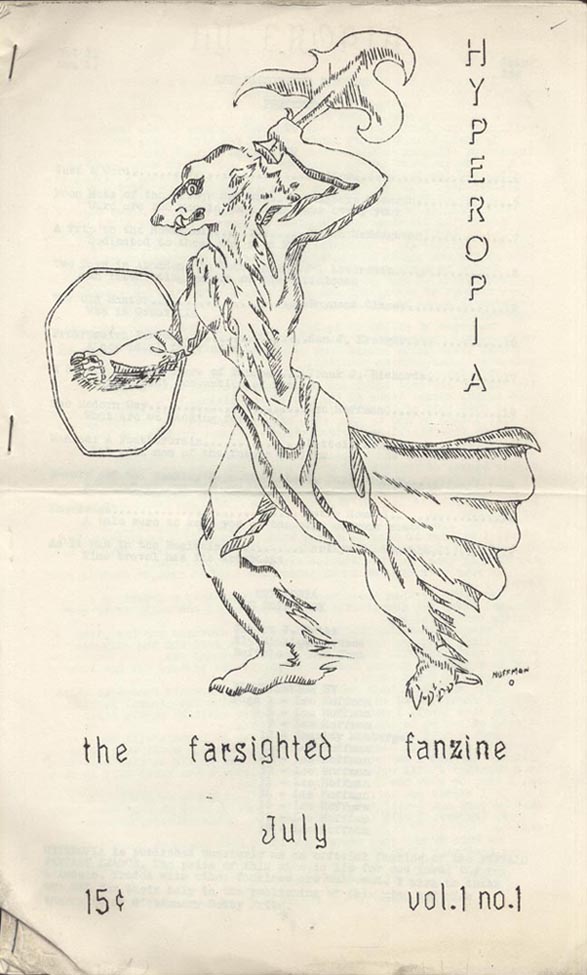 July 19xx issue (no date)
July 19xx issue (no date)
Science fiction fanzines enjoyed moderate success within the science fiction culture and industry as a communication and promotional tool.
However, due to the impracticality of their production and distribution as well as the erratic nature of the industry as a whole, they would remain an underground characteristic of the genre.
Special thanks to Amy McGarrahan (Special Collections Intern) and Nicole Smith (Special Collections Student Assistant) for their work on this project.
This presentation was created in HTML using CSS. The layout and
stylesheet are available to borrow via a share and share alike creative commons
license. See page source for details.
Bibliography
Science Fiction Pulps:
- The Science Fiction Source Book, Wingrove David; Van Nostrand Reinhold Company;
135 West 50th St; New York, NY 10020
- Science Fiction, Roberts Adam, Routledge,
29 West 35th St; New York, NY 10001; 2000
- Science Fiction Culture, Bacon-Smith Camille; University of Pennsylvania Press;
Philadelphia; 19104-4011; 2000
- 2000 AD. : Illustrations from the Golden Age of Science Fiction Pulps, Sadoul Jacques; H. Regnery; Chicago; 1975
- Over My Shoulder: Reflections on a Science Fiction Era, Eshbach Lloyd Arthur;
O. Train, Philadelphia; 1983
Science Fiction Fanzines:
- Science Fiction Culture, Bacon-Smith Camille; University of Pennsylvania Press;
Philadelphia; 19104-4011; 2000
- The World of Fanzines, Wertham Fredrik MD. ; Southern Illinois University Press;
Chicago; 1973
- The Encyclopedia of Science Fiction, Nicholls Peter ; Granada Publishing Limited;
Frogmore; St. Albans, Herts AL2 2NF, 1979
- DIY: The Rise of Lo-Fi Culture, Spencer Amy; Marion Boyars;
London; New York; 2005



























